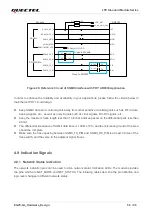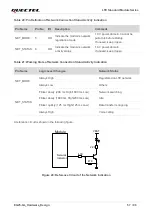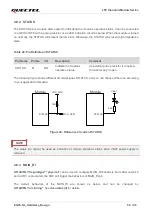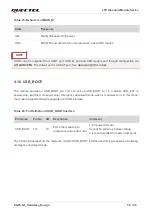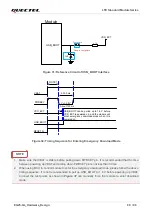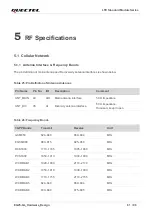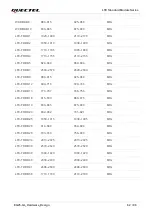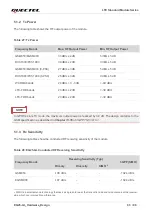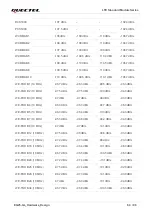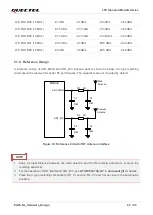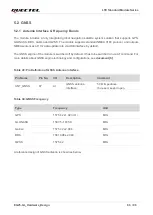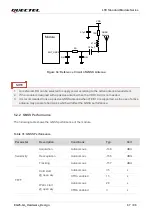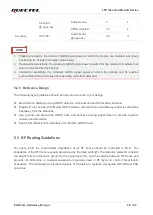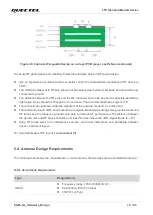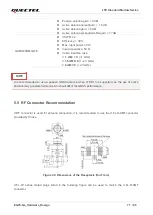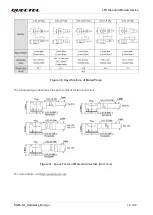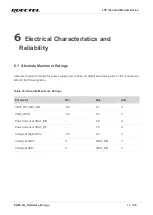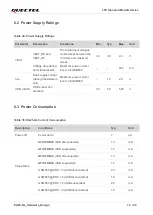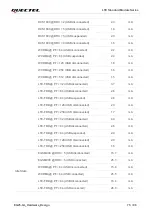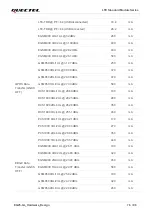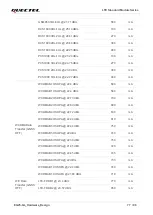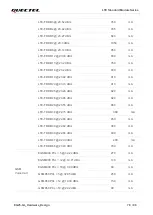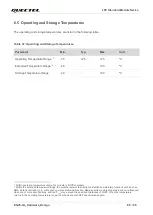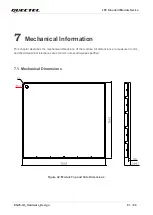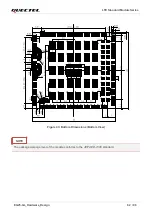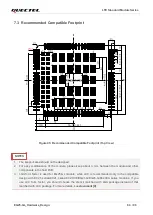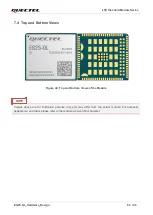
LTE Standard Module Series
EG25-GL_Hardware_Design 70 / 96
Figure 38: Coplanar Waveguide Design on a 4-layer PCB (Layer 4 as Reference Ground)
To ensure RF performance and reliability, follow the principles below in RF layout design:
⚫
Use an impedance simulation tool to accurately control the characteristic impedance of RF traces to
50
Ω.
⚫
The GND pins adjacent to RF pins should not be designed as thermal relief pads, and should be fully
connected to ground.
⚫
The distance between the RF pins and the RF connector should be as short as possible and all the
right-angle traces should be changed to curved ones. The recommended trace angle is 135°.
⚫
There should be clearance under the signal pin of the antenna connector or solder joint.
⚫
The reference ground of RF traces should be complete. Meanwhile, adding some ground vias around
RF traces and the reference ground could help to improve RF performance. The distance between
the ground vias and RF traces should be not less than twice the width of RF signal traces (2 × W).
⚫
Keep RF traces away from interference sources, and avoid intersection and paralleling between
traces on adjacent layers.
For more details about RF layout, see
document [7]
5.4 Antenna Design Requirements
The following table shows the requirements on main antenna, Rx-diversity antenna and GNSS antenna.
Table 32: Antenna Requirements
Type
Requirements
GNSS
⚫
Frequency range: 1559
–1609 MHz (L1)
⚫
Polarization: RHCP or linear
⚫
VSWR:
≤ 2 (Typ.)

